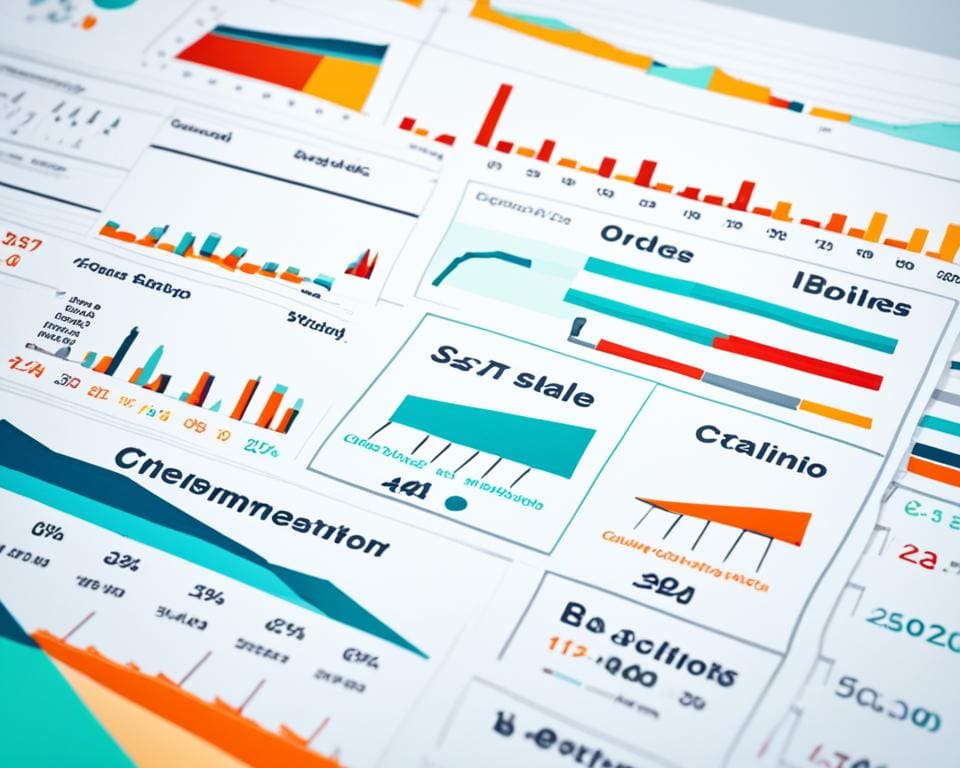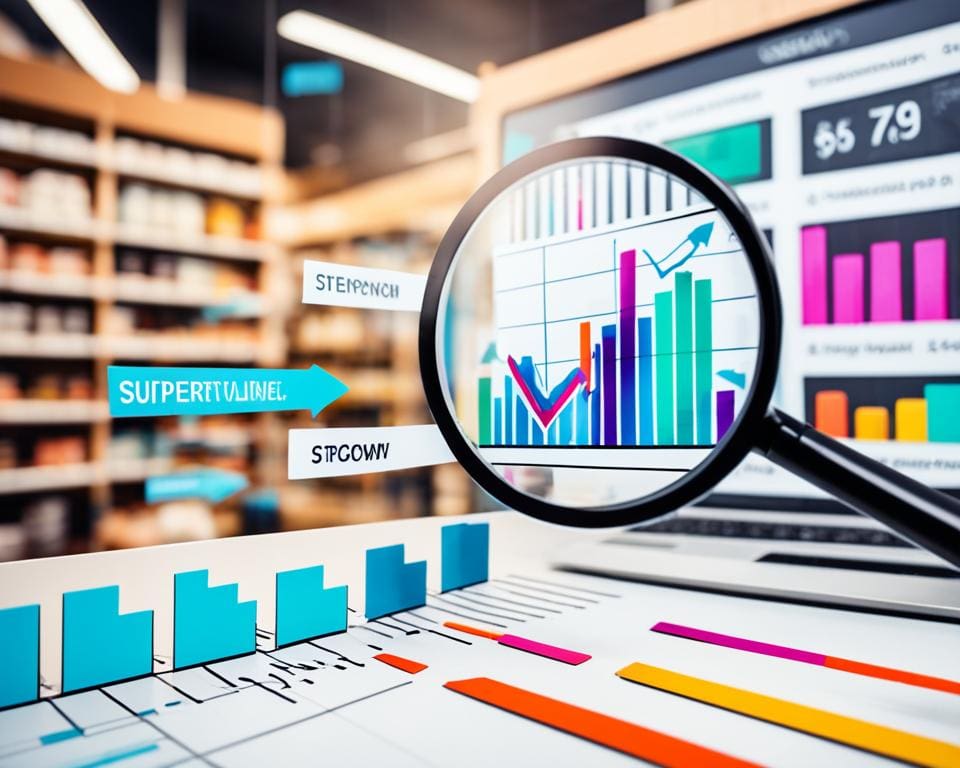The retail world is changing fast. Shops are moving from old ways to data-driven strategies. In this new era, using Data Analytics in Retail is key. It has grown from a helpful tool to an essential part for businesses wanting more sales and to stay ahead. Data analysis helps improve how things run, customer relations, and how much money is made.
Retail analytics tools offer big benefits. Brands see a 4%-5% rise in sales. They also find ways to cut costs by 15%-25%. Plus, they achieve a 30% increase in online sales with targeted marketing. Companies good at using analytics can adapt to changes in the market and what customers want. This leads to steady growth and more profits.
This shift is big news. By 2028, the retail analytics market will hit $18.33 billion. It shows how important data is in retail’s future. In this piece, we’ll look at how good data use can lead to more sales. It lays the groundwork for success that lasts.
Understanding Data Analytics in Retail
The retail landscape is changing fast, thanks to data analytics. This change is moving us from old ways to new ones, where technology leads decision-making. Retail data analysis has become key to knowing what customers want and making our businesses better. With data from different places, companies can do well even when the competition is tough.
Evolution of Retail Analytics
Retail analytics have moved from guesswork to using a lot of data. At first, retailers used simple stats and their instincts. But as tech got better, so did the tools for understanding business data, like algorithms and machine learning. These tools help retailers find deeper meanings in their data. They allow for smarter, data-driven choices. Now, businesses can spot trends quickly and adapt to what’s happening in the market.
Types of Retail Data
There are key types of retail data for good analysis. Retailers use:
- Descriptive analytics to look at past results for basic insights.
- Diagnostic analytics to find why things happened by mixing different data.
- Predictive analytics to guess future trends based on things like what customers do.
- Prescriptive analytics to suggest actions from predictions, using AI and big data sets.
Using these analytics types, retailers can get a clear picture of important things like what shoppers like and how much stock to keep. This full view helps them make better decisions and quickly adjust to what people want. Adding tools for checking on stores makes things like where to put products and managing stock even better. Data analysis in retail helps businesses face challenges and grab new chances with ease.

Data Analytics in Retail: Driving Sales with Insights
Data analytics are changing the retail world, helping businesses better connect with their customers. By understanding what customers do and want, retailers can make smarter marketing plans. This leads to more sales and happier customers, which is key for a business’s success.
Customer Insights to Boost Sales
Retailers can group customers by what they buy to send them targeted ads. Tailored ads make shopping more appealing and can boost sales. By knowing what customers expect, retailers can stand out from the competition.
Inventory Management Optimization
Good inventory management is vital for retail success. With data analytics, retailers can keep just the right amount of stock. This makes customers happy and helps the store’s profits.
Effective Pricing Strategies
Smart pricing strategies also help retailers stay ahead. By adjusting prices based on demand, shops can keep competitive. This helps them quickly adjust to market changes, ensuring customers always get fair prices.
Sales Growth through Supply Chain Optimization
Using data smartly helps with supply chain management and boosts sales. Retailers who embrace data analytics see better operations and customer relationships. As retail grows more digital, using data well will be key for success.









